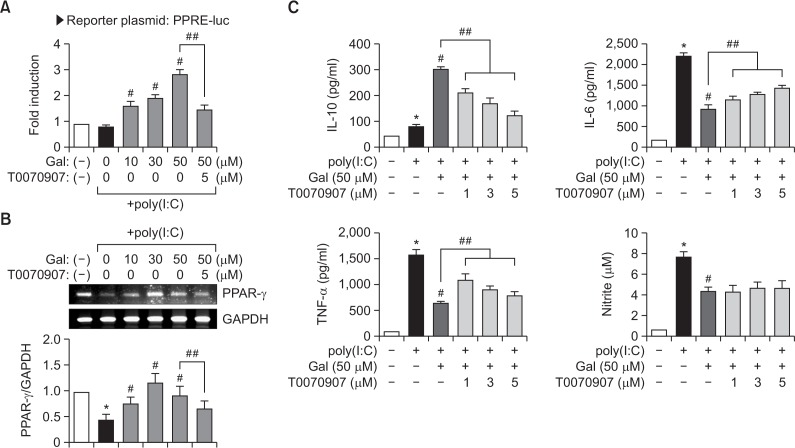Fig. 5.
Galangin increases PPAR-γ transcriptional activity and expression, and PPAR-γ antagonist reverses the anti-inflammatory effect of galangin in poly(I:C)-stimulated BV2 cells. (A) BV2 cells were transfected with PPRE-luc and treated with poly(I:C) with or without galangin. After 6 h, the cells were harvested and the luciferase assay was performed. The PPAR-γ antagonist, T0070907 (5 μM), was added to BV2 cells 1 h before treatment with galangin. (B) BV2 cells were pretreated with galangin for 1 h prior to incubation with poly(I:C) for 6 h. The mRNA level of PPAR-γ was determined by RT-PCR. Quantification data are shown in the bottom panel. (C) The effect of T0070907 on the production of IL-10, IL-6, TNF-α, and NO in poly(I:C) +galangin-treated cells. BV2 cells were pre-treated with the indicated concentrations (1, 3, 5 μM) of T0070907 for 1 h, and then galangin (50 μM) for 1 h, followed by treatment with poly(I:C) (10 μg/ml) for 16 h. The amounts of IL-10, IL-6, TNF-α, and NO released into the medium were determined. Data are expressed as mean ± SEM from four independent experiments. *p<0.05, vs. control samples. #p<0.05, vs. poly(I:C)-treated samples. ##p<0.05, vs. poly(I:C) +galangin-treated samples.

